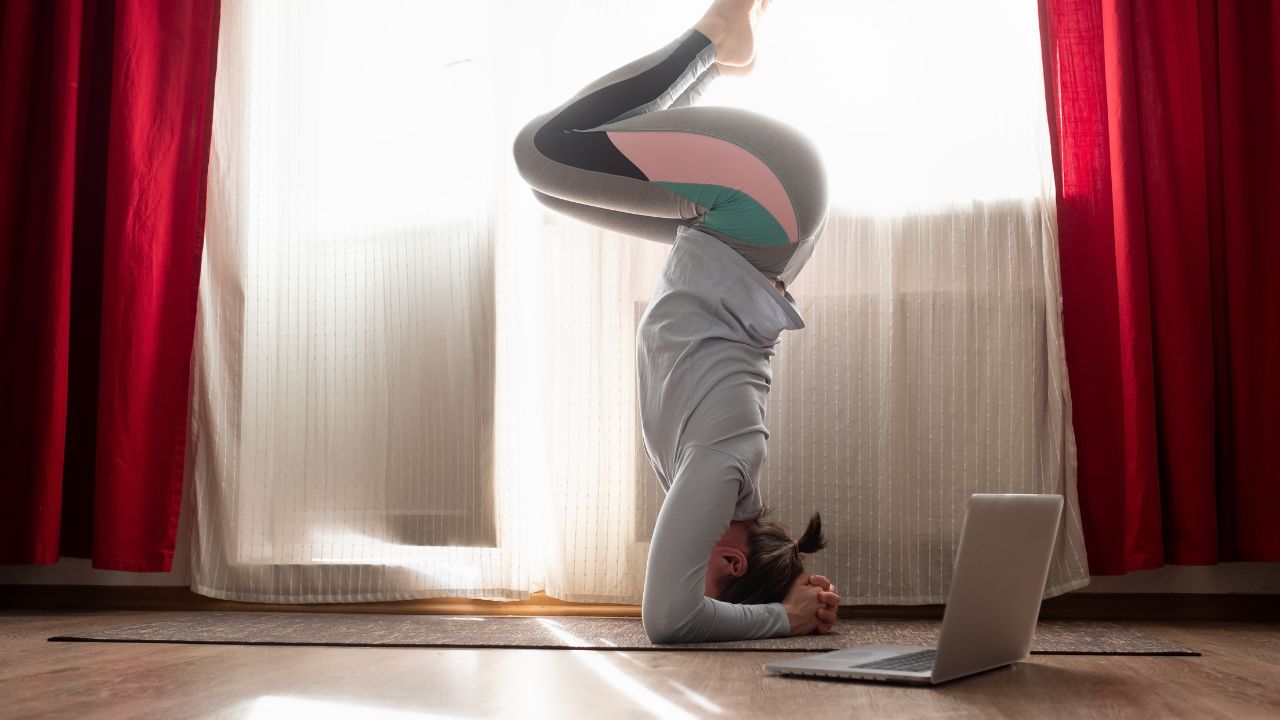Supported Headstand (Salamba Sirsasana)

Supported Headstand, or Salamba Sirsasana, is an inversion pose that involves balancing on the forearms with the head supported on the ground. It offers numerous benefits for the body and mind, including improved circulation, increased upper body strength, and enhanced focus. Here’s how to practice Supported Headstand:
- Start by kneeling on the floor. Interlace your fingers, keeping the pinky fingers tucked and the palms forming a cup shape.
- Place your forearms on the ground, positioning them parallel to each other, shoulder-width apart. Your elbows should be directly under your shoulders.
- Lower the crown of your head onto the mat, cradling it in your hands. Your hands should provide support without applying excessive pressure on your head or neck.
- Lift your hips up and walk your feet closer to your torso, keeping your knees bent. Engage your core muscles to help stabilize your body.
- Slowly straighten your legs, lifting your knees off the ground. Shift your weight onto your forearms and start to lift your feet off the mat, coming into a modified Downward Facing Dog position.
- Gradually begin to walk your feet closer to your torso, allowing your hips to stack over your shoulders. Keep your core engaged and your legs active.
- Maintain a steady gaze, looking toward a point between your hands to help with balance. Breathe deeply and relax your neck and facial muscles.
- Hold the pose for a desired duration, gradually increasing your practice over time. Beginners may start with shorter holds, while more experienced practitioners can stay in the pose for longer periods.
- To come out of the pose, slowly lower your legs back down, bending your knees and returning to the modified Downward Facing Dog position. Then, gently lower your knees to the ground and rest in Child’s Pose or a neutral position.
Some key points to remember while practicing Supported Headstand:
- Practice against a wall or with the assistance of a qualified instructor until you have developed sufficient strength and balance.
- Avoid practicing Supported Headstand if you have neck or shoulder injuries, high blood pressure, or are menstruating.
- Engage your core muscles and press down firmly through your forearms to maintain stability.
- Never rely solely on the head for support; the majority of the weight should be distributed through the forearms and shoulders.
- Listen to your body and progress gradually, respecting your own limits and capabilities.
Benefits of Supported Headstand include:
- Increased blood flow to the brain, promoting mental clarity and focus.
- Strengthening of the upper body, including the shoulders, arms, and core.
- Improved balance, stability, and body awareness.
- Relief from stress and anxiety, as inversions have a calming effect on the nervous system.
- Improved digestion and lymphatic circulation.
Supported Headstand requires practice, patience, and a focus on proper alignment. It is important to learn this pose under the guidance of a qualified yoga instructor to ensure safety and correct technique. Enjoy the benefits and sense of empowerment that come with practicing Supported Headstand.
Specific Content Keywords : supported headstand salamba sirsasana steps,supported headstand salamba sirsasana meaning,supported headstand salamba sirsasana benefits,salamba sirsasana benefits,salamba sirsasana 2,salamba sirsasana steps,salamba sirsasana information in english,salamba sirsasana supported headstand,does headstand help handstand,what does headstand do for you.

